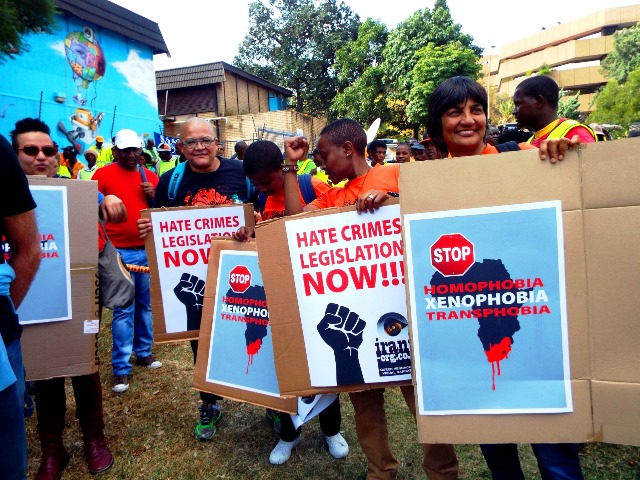‘One Size Can’t fit All’ with SRHR service

In the almost ten years that I have directly or indirectly worked on Sexual and Reproductive Health Rights (SRHR), we have made many strides that should be celebrated; at the same time, we must remember there’s still a long way to go to make sure that SRHR services – including but not limited to access to information, affordable contraception methods, counselling, prevention and management of sexually transmitted infections including HIV, and safe abortion – are not presented as “one size fits all.”
Across organizations, many agree that the provision of SRHR services coupled with Comprehensive Sexuality Education (CSE) is vital for the health of everyone – including key populations such as sex workers, Lesbians, Gays, Bisexual, Transgender and Intersex (LGBTI) individuals. Conversely, there is often disagreement on the following principles:
- Services cannot take a blanket ‘’One Size fits all” approach for all populations;
- Services cannot be applied discriminately based on age, race, sex, orientation, etc;
- Service provision systems cannot be designed without the input of those the services seek to serve.
Because of these inconsistencies, we must make a concerted effort to ensure no one is left behind in accessing life-saving health services including access to contraception and safe abortion.
Numerous countries have endorsed and signed on to agreements to promote, provide, and advance SRHR services as part of general healthcare delivery – e.g the East and Southern Africa (ESA) Commitment and the Committee on the Elimination of Discrimination Against Women (CEDAW) – both of which clearly call for SRHR services to be provided indiscriminately. Despite this, many countries have laws that discriminate against LGBTI and women (anti-abortion laws) making it difficult for them to access the care they need and deserve.
In Zambia, for example, the current National AIDS Strategic Framework (2017-2021) calls for appropriate health/SRHR service provision for the LGBTI community; at the same time, Section 155 of their Penal Code criminalises homosexuality. By extension, this means that members of the LGBTI community are scared to access healthcare services such as condoms, lubricants, STI screening and HIV services (screening or medication) for fear of being reported and arrested.
As the development community champions the Sustainable Development Goals (SDGs) as a framework for inclusive global development “not leaving anyone behind,” we must ensure this priority is enforced across all sectors – including health care and support for marginalized populations.
Our focus must move from a sole focus on the simple “provision” of SRHR services and begin looking at strategies to provide these services in a friendly, conducive, and non-threatening way that meets the unique needs of every individual.
In support of this goal, we also need strong advocacy backed by solid evidence to support appropriate and adequate delivery of SRHR services to key populations.
With support from the Swedish Development Cooperation Agency (SIDA), Hivos recently established a Regional SRHR Fund which will provide grants to organizations that can design and implement programs to strengthen Adolescent and Youth SRHR policy and implement programming and service delivery to optimally address pervasive health challenges across the region – including those that directly impact upon the poorest and most vulnerable and have the potential to address gender inequalities. The interventions under this funding will recognize the diversity and heterogeneity of adolescents and youth in the ESA (East and Southern Africa) region and seek to appreciate the multiple layers of marginalization faced by key populations and leverage opportunities for addressing cross-cutting issues that impact on Adolescent and Youth SRHR.
Grant-making mechanisms like this help to facilitate voice, agency and collaboration of youth-led organisations and other SRHR organisations at the centre of robust and effective advocacy to ensure that services are representative, informative and aimed at responding to the various needs of key populations.
Moving from rhetoric to action is the critical next step to ensuring no one is left behind.


